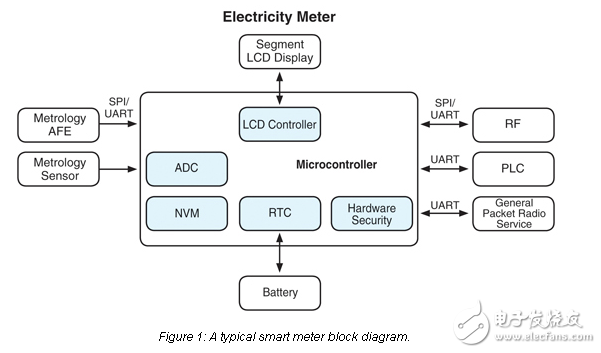
资料下载

智能电能表的单片机选择
智能电能表的单片机选择
智能电表正在迅速发展,世界各地的市场采用不同的架构(以及不同的监管要求)。由于他们正在向数以百万计的公用事业客户推出产品,对智能电表的成功设计有极大的兴趣和巨大的回报。
在最基本的形式中,实用电表提供能量和功率测量、数据传输、实时时钟维护和仪表面板上的数据显示。智能电表的关键设计要求包括:(1)它们应该在低能量下运行,以便能在电池电量上长时间运行,(2)它们必须包括能够保护通信内容和存储数据安全性的安全功能。
基本电表还提供单向通信,使电力供应商能够自动和远程地使用不同的通信解决方案,包括rf无线、电力线载波和通用分组无线系统(GPRS)数据通信。

Smart meters with Advanced Metering Infrastructure (AMI) architecture provide two-way communications and offer the benefits of improved reliability and accuracy, the ability to monitor outages, and provide remote disconnect as well as the option of adding variable tariffs laden with incentives to consumers to shift peak loads. Smart meters can also communicate directly with other meters and with in-house display units to allow both the utilities and their customers to better manage energy consumption.
As implementations and architectures become more sophisticated, electricity meters demand more processing power and more flash memory for software stacks, communication protocols, and firmware updates. The meter also has a communications interface. In the U.S., many companies have selected the ZigBee wireless radio as the link to the utility, while in Europe, a number of utility groups have agreed to use power-line communications nodes.
声明:本文内容及配图由入驻作者撰写或者入驻合作网站授权转载。文章观点仅代表作者本人,不代表电子发烧友网立场。文章及其配图仅供工程师学习之用,如有内容侵权或者其他违规问题,请联系本站处理。 举报投诉
- 相关下载
- 相关文章






